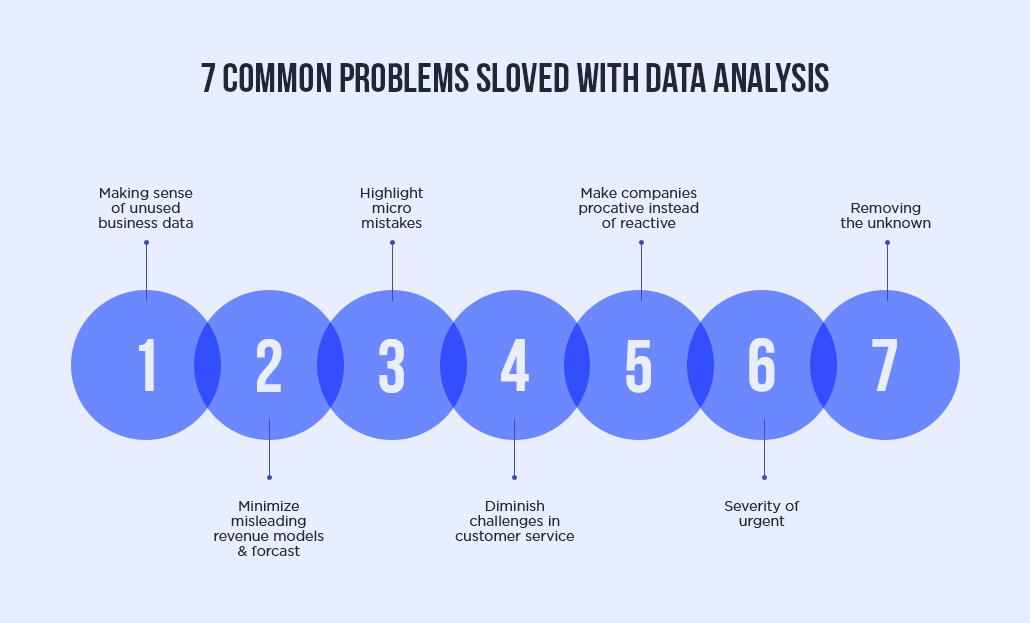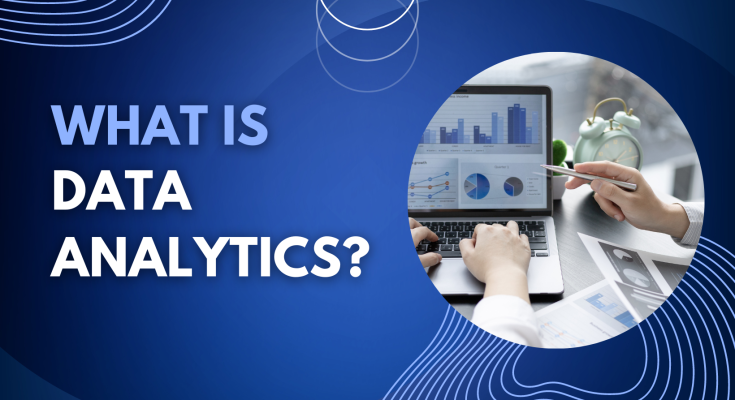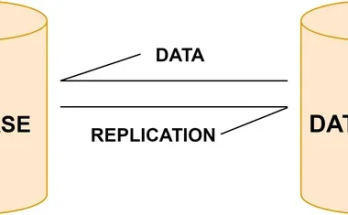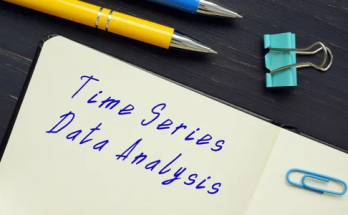In this digital world, data is the spine of all companies. With a large -scale data production, it is essential to have a field that focuses on deriving ideas from it. What is data analysis? What tools help in data analysis? How can data analytics be applied to various industries? We will be answering all these questions here!
What is data analysis?
The excess of data generated from variable sources makes no sense unless analyzed. The raw data analysis process to convert it into an interpretable and usable form with the capacity for skilled information is data analysis. The data analyzed find the application to decide future strategies of the company, have an overview of progress, and analyze successful and unsuccessful programs worthy of continuing and stopping.
Also Read: Learning Route to become Data Analyst in 2024
Types of data analytics
Descriptive analytics
Diagnostic analytics
Reasoning behind dynamic or state data is diagnostic analytics. Answer the “why” identifying appropriate data sources appropriate to find the answer. Common use methods include regression analysis, time -series data analysis, probabilities theory and filtering.
Predictive analytics
Predictive Analytics aims to provide data -based predictions and ideas to decide on future steps of the company. Analyze data and performance previously available to anticipate the possibilities with logic. It helps companies make investigated decisions compared to random or random -based events. Some of the techniques involved in predictive analytics include neural networks, regression and decision tree. Prescribing Analytics
The prescriptive analysis is based on predictive analytics and helps to find the best possibility or circumstance among the many other possible methods. It helps to take advantage of predictive results through automatic learning, algorithms and computational modeling.
Read too: This is how experts predict the future of the IA
How does data analysis work?
Step 1: Data collection
Data analysis begins with the identification of the information required for a specific analysis. The data are collected, mount by integration and become the desired format. The next step is to load in the analysis system. Alternatively, data collection can be done by separating data flowing from the analysis system and partitioning the data, followed by the analysis.
Step 2: Data cleaning and preprocessing
Data processing eliminates pollutants or unwanted information capable of affecting the accuracy of results. Data cleaning and pre -processing involve the profile to ensure data consistency and delete redundant data. The data are prepared and entered with data government policies.
Step 3: Data modeling
The data model involves the construction of analytics, validating its precision and optimizing it for the desired use. The process, known as model formation, consists of using predictive modeling tools, several programming languages and analysis software. It also triggers business actions automatically.
Step 4: Data Viewing
The last step is to communicate the results to business executives. They are intriguing and easily understandable by incorporating infographics, graphs and graphs. Using real -time updated tools is the preferred option to prevent significant details from missing.
Data Analysis Applications
Business Analytics
The large volume of data generated helps in business analytics by customizing customer experience and helping to make informed and logical business decisions. It also helps to improve operational efficiency, to promote risk mitigation, relieve the effects of setbacks and increase safety.
Health analytics
The health industry requires data analyzes for better resource availability preparation, meeting the sudden requirements of the treatment installation and increasing the efficiency of verification. In addition, it helps risk mitigation, it offers rapid results and brings sustainable changes.
Social media analytics
Data analysis benefit the social media by analyzing the audience specifications, preferences and behaviors. It helps optimize content according to the customer requirement, provides campaign performance information and optimizes influencer marketing acting on appropriate objectives.
Marketing Analysis
Marketing analysis is market segmentation in different customer understanding criteria. Relief competitors’ analysis by focusing on your strengths and weaknesses and providing improvement strategies. Data analysis helps in sales forecast, product development and price strategy.
Sports analytics
The pre and post-game data generated during different games and activities help to analyze the performance of the players, to design the strategy in the game, to identify hidden talents and to interpret the preferences and requirements of the lovers of the sport.
Read Also: Data Analystics Applications
Statistical Programming Languages (R, Python)
R and Python Statistics Programming Languages provide platforms that include statistical and machine learning tools for hypothesis tests, time series, regression analysis and implementation of automatic learning models. They also contribute through visualization and mining tools for data extraction, and Python also provides web scrap and natural language processing.
Data View Tools (Tableau, Power Bi)
Data visualization tools such as Tableau and Power BI provide platforms to create interactive panels for a better presentation. It also allows the creation of graphs, infographics, maps, graphs and predictive analysis applications. Power Bi allows visualization through different representation formats, data modeling, equipment collaboration and integration with other tools.
Big Data Technologies (Hadoop, Spark)
Hadoop is specifically involved in complex analytics, storage and management, data processing and node editing, thus allowing scalability. Large data technology such as Spark also allows data processing, helps build machine learning models, memory processing that teaches speed, provides real -time analytics and easily integrates with other large data tools.
Cloud Computing Platforms (AWS, Azure)
Cloud computing platforms allow them to operate in real time by different members of the same team or different teams. The benefits available while making data analytics are the precise updates, the tools of storage, processing and transformation and the potential of implementing machines and scalability learning models.
Also read: the evolution and future of data science innovation
Data analysis challenges and limitations
Privacy and Data Security Problems
Data analysis poses a risk through privacy offenses, which is ashamed for organizations that include confidential information. Commit anonymity, along with the easy disclosure of masked data. Data analysis can also influence behaviors that lead to the suggestion of low ethical actions. Similarly, data protection legally in situations where data reveal is required can also pose a risk to the safety of individuals.
Quality problems and data availability
Several times the data analysis is not accurate. Occurs due to incorrect collected data or incorrect algorithms. Adding data to the previously inaccurate information further increases the risk of negatively affecting the decision and the future of the organization. The analysis of inaccurate data in companies that serve customers may lead to the denial of the service, incorrect diagnosis, false accusations and inappropriate treatments.
Challenges of bias and interpretation
There are numerous biases found in data analytics, such as selection, sampling, interpretation, confirmation, algorithm and excess bias. These biases occur due to confirming and adhering to old beliefs, the sample should be more specific or represent the global population in consideration, erroneous interpretation of data, high data complexity and multiple other reasons. You can remove this bias by recognizing the specific type found.

Final verdict
Data analysis is crucial in the current era, where tons of data are generated by and for companies. These maintain key information to decide the following steps and brand growth. It helps to understand patterns and relationships between services or products and customers and analyze trends. It is necessary to have multiple labor perspectives, it is necessary to obtain knowledge, skills and knowledge in data analytics. We offer all aspects mentioned through our data science BlackBelt Program. So what is the wait? Sign up for the course and start the new trip.
Conclusion
In conclusion, companies and organizations need data analyzes as a critical tool for extracting action ideas from the massive volumes of data they produce. Data analysts can find patterns, trends and links that guide strategic decision making using a methodical approach to data collection, cleaning, modeling and visualization. Using the right tools and technologies can help relieve concerns about things like biases, quality problems and data privacy. Data proliferation will further increase the need for data analysis knowledge, making it an essential set of skills for all companies. In an increasingly data -based world, companies that successfully use the potential of data analysis will have a competitive advantage.
Questions frequently?
A. Data analysis is the process of examining large data sets to discover patterns, trends and ideas. It involves using various techniques and tools to extract meaningful data information.
A. The role of data analysis is to help organizations make informed decisions by analyzing data for information on their operations, customers and market trends. It involves tasks such as data collection, cleaning, analysis, interpretation and visualization.
A. The five types of data analytics are:
1. Descriptive analytics
2. Diagnostic Analytics
3. Predictive Analytics
4. Prescribing Analytics
5. Exploratory analytics
A. Examples of data analytics include:
1. Analyze the customer purchase history to identify trends and preferences.
2. Predict future sales based on historical data and market trends.
3. Identification of possible frauds or anomalies in financial transactions.
4. Analyze sensor data to predict equipment failures in manufacture.
5. Analyze the websites and users’ behavior traffic to optimize marketing strategies.


